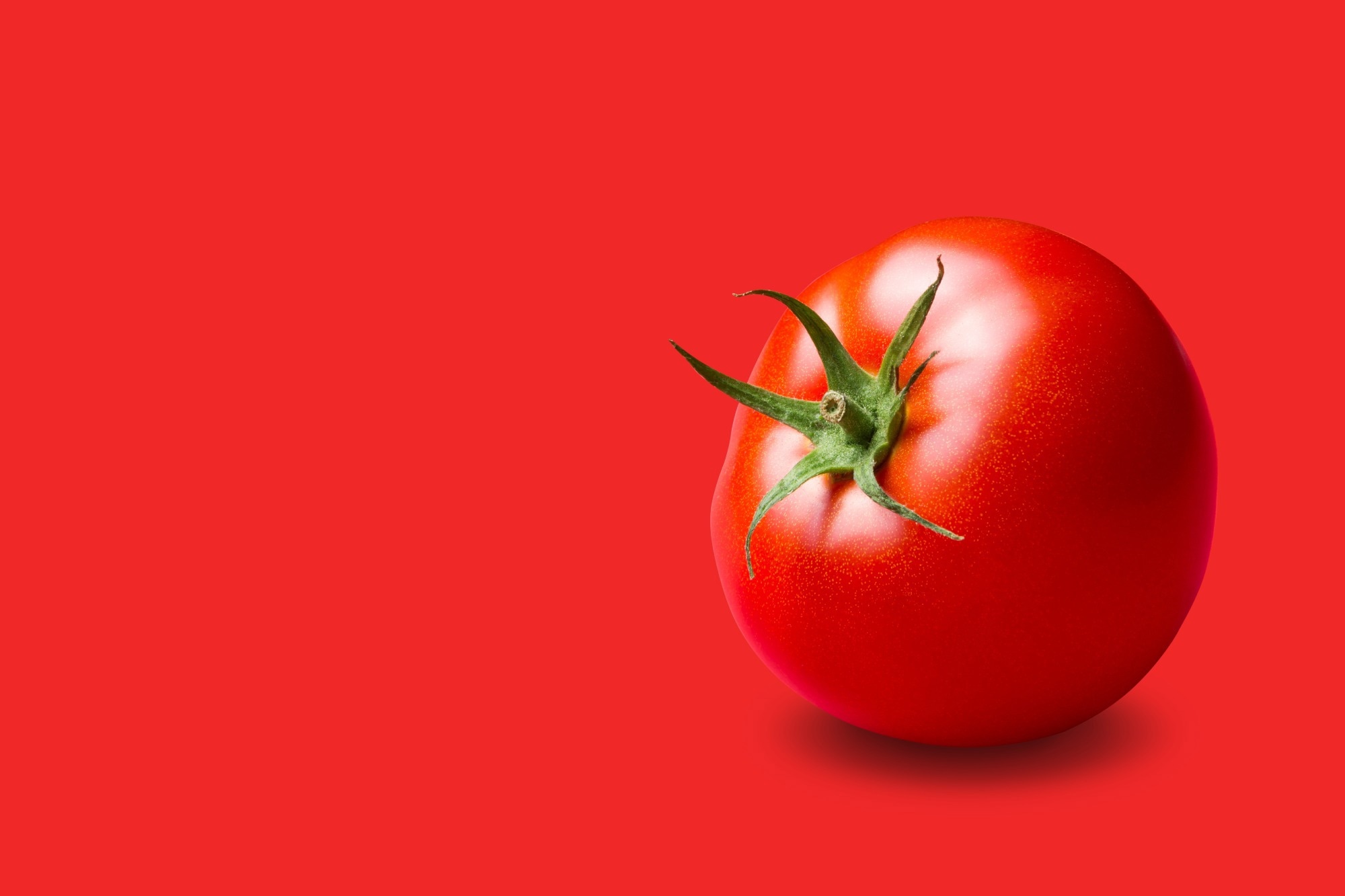In a recent study published in Plant Biotechnology Journal, researchers in Spain used a cisgenic approach to metabolically engineer tomatoes and fortify them further with flavonoids and branched-chain amino acids (BCAAs). The fortified fruits showed a multifold increase in amino acids such as valine, leucine, and isoleucine, as well as flavonoids, including kaempferol and quercetin, compared to wild-type tomatoes. The safety of consumption of these engineered tomatoes could be assessed using metabolomic and transcriptomic analyses in the future.
 Study: Dually biofortified cisgenic tomatoes with increased flavonoids and branched-chain amino acids content. Image Credit: AnEduard / Shutterstock
Study: Dually biofortified cisgenic tomatoes with increased flavonoids and branched-chain amino acids content. Image Credit: AnEduard / Shutterstock
Background
Appropriate and adequate nutrition is crucial to health care, and customizing our food sources based on dietary requirements is the need of the hour. Plant biotechnology techniques such as gene editing and cisgenesis allow the metabolic customization of crops, vegetables, and fruits to optimize their nutritional content, the consumption of which could help prevent deficiencies and improve health outcomes, especially in older adults and vegetarians.
Flavonoids are secondary plant metabolites proposed to play a role in preventing cardiovascular diseases and colon cancer. BCAAs, namely valine, leucine, and isoleucine, constitute about 18% of the amino acids in muscle protein and are critical for anabolism in skeletal muscles. While BCAA supplements are used as standard treatment for sarcopenia, they have also been associated with an increased body mass index (BMI). In the present study, researchers aimed to precisely increase the level of these nutrients in tomatoes using a cisgenic approach, especially for the benefit of those relying majorly on plant-based diets.
About the study
Cisgenesis makes use of a plant’s own or cross-compatible gene pool to bring about favorable traits in crops, thereby reducing the potential risks associated with transgenesis, which involves the introduction of foreign DNA into modified food crops. This study combined cisgenesis, metabolomics, and transcriptomics to improve and evaluate tomatoes' flavonoid and BCAA content. It involved the constitutive expression of two genes, namely the herbicide-resistant form of an acetolactate synthase gene (mSlALS) and an MYB12-like transcription factor (SlMYB12) under a fruit-specific promoter. While SlMYB12 played a role in the upregulation of genes involved in the flavonoid synthesis pathway, the mSlALS gene served as both a selectable marker and a key player in the increased synthesis of BCAAs.
The nutritional quality of biofortified fruits was compared to wild-type tomatoes in terms of flavonoid and BCAA content using metabolic analysis based on liquid chromatography-mass spectrometry (LC-MS). Reverse transcription-quantitative polymerase chain reaction (RT-qPCR) was used to study the gene expression in the fruits to determine the effects of simultaneous overexpression of mSlALS and SlMYB12 on the metabolic profile.
Results and discussion
Compared to wild-type tomatoes, the biofortified fruits had 21-fold higher Leucine, 9-fold higher Valine, 3-fold higher Isoleucine, 64-fold higher kaempferol, and 45-fold higher quercetin. The degree of target nutrient enrichment with this cisgenic approach was found to be comparable to that of transgenesis. Additionally, the overexpression of mSIALS was found to confer resistance to plants against chlorsulfuron, an herbicide.
No significant difference was observed in the level of organic acids in the cisgenic and wild-type fruits. However, glucose and fructose were found to be enriched in the cisgenic tomatoes. While these fortified tomatoes could meet the daily dietary requirements of antioxidants, they could only meet up to 5% of the daily BCAA requirement.
LC-MS findings clearly distinguished the metabolic profiles of the peel and fruit flesh of the enriched and wild-type tomatoes, especially in the later ripening stages. BCAA-derived volatiles were also found to over-accumulate in the leaves of cisgenic plants. A marked difference was observed in the targeted and untargeted metabolomes of the cisgenic and wild-type fruits. This indicates the extent of changes brought about in the composition of fruits simply by altering the expression of two genes, irrespective of the genetic engineering method applied.
This is the first study to have described an acetolactate synthase (ALS)-based cisgenic breeding strategy. As no exogenous DNA is used in the development of cisgenic plants, they are more likely to overcome the regulatory concerns in some countries associated with the sale of genetically modified crops. Additionally, some survey findings reveal that cisgenic food crops have an increased public acceptance for consumption.
Conclusion
In conclusion, the study demonstrated that cisgenesis is a feasible and promising approach to significantly improve the flavonoid and BCAA content of tomatoes while reducing the safety risks associated with genetic modification. This approach, when supported by metabolomic and genomic analyses, could be extended to other food crops to increase their nutritional value and address malnutrition and deficiency-related health conditions in high-risk populations.